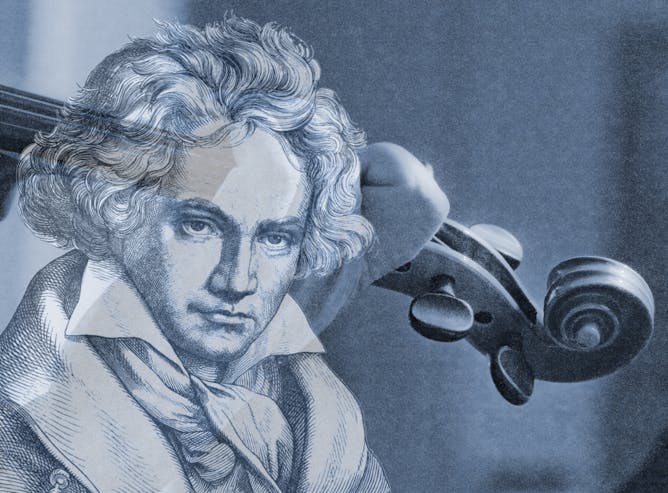|
When Ludwig von Beethoven died in 1827, he left behind some musical sketches for a symphony he was never able to complete. Ever since then, Beethoven fans and musicologists have lamented what could have been.
In 2019, computer scientist Ahmed Elgammal, who works at the intersection of art and AI, was approached by Dr. Matthias Röder, the director of a music technology institute in Germany. Röder wondered whether Elgammal would be able to use machine learning to faithfully realize Beethoven’s vision.
Until then, the most AI had done was generate a short piece of music in the style of Bach. Elgammal details how a crack team of musicologists and computer scientists came together and, over the course of two years, painstakingly taught a machine Beethoven’s oeuvre and methods. Now, what might have been Beethoven’s 10th symphony is ready to be performed for the world.
Also today:
|

|
Nick Lehr
Arts + Culture Editor
|
|

Throughout the project, Beethoven’s genius loomed.
Circe Denyer
Ahmed Elgammal, Rutgers University
When Beethoven died, all he left behind were some sketches for his 10th Symphony. Now, thanks to the help of artificial intelligence, the composer’s vision is coming to life.
|
Economy + Business
|
-
Jack J. Barry, University of Florida; Ann Christiano, University of Florida; Annie Neimand, University of Florida
While surveys have shown a large share of unvaccinated workers threatening to quit over a mandate, the reality is few actually do.
-
Zheng Tian, Penn State; Stephan J. Goetz, Penn State
Food insufficiency rates rose across the board, researchers who analyzed government data found.
|
|
Ethics + Religion
|
-
Penny Edgell, University of Minnesota; Wendy Cadge, Brandeis University
Americans are getting more comfortable with new forms of spirituality, but their views of atheists are still complicated.
|
|
Arts + Culture
|
-
Nick Marx, Colorado State University; Matt Sienkiewicz, Boston College
Critics have long pooh-poohed conservative comics. But in today’s fragmented media environment, right-wing comedy has become both a moneymaker and a force in politics.
|
|
Education
|
-
Christopher A. Kearney, University of Nevada, Las Vegas
COVID-19 upended families’ morning routines. Getting kids back on schedule and sticking to it will help ease difficult transitions, a child psychologist explains.
|
|
Science + Technology
|
-
Matthew Robert Bennett, Bournemouth University; Sally Christine Reynolds, Bournemouth University
The New Mexico findings could rewrite the history of human migration to the Americas.
|
|
Politics + Society
|
-
Thaddeus L. Johnson, Georgia State University; Natasha N. Johnson, Georgia State University
Months of bipartisan talks in Congress aimed at reaching consensus over policing reforms have ended with no agreement. Two policing scholars argue that federal efforts are better placed focusing on supporting local measures.
|
|
Environment + Energy
|
-
Seth Blumsack, Penn State
Building even more power poles and transmission lines won’t avert outages when major disasters strike.
-
Scott Denning, Colorado State University
HFCs keep refrigerators cool, but when these short-lived climate pollutants leak, they warm the planet.
|
|
Health
|
-
Jessica Bernard, Texas A&M University
Reduced brain volume in people who have experienced COVID-19 resembles brain changes typically seen in older adults. The implications of these findings are not yet clear.
|
|
Podcast 🎙️
|
-
Gemma Ware, The Conversation; Daniel Merino, The Conversation
How scientists are improving their understanding of the connection between extremes and climate change – and what’s to come. Listen to The Conversation Weekly.
|
|
From our International Editions
|
-
Charlotte Galpin, University of Birmingham; Maren Rohe, University of Birmingham
Support for Alternative for Germany continues in the former East Germany in particular. It’s worth really asking why.
-
Kamyar Razavi, Simon Fraser University
Storytelling can be a powerful tool to communicate complicated crises like climate change. Telling relatable and local stories can help motivate people to action.
-
Hamish McCallum, Griffith University
It’s more evidence a lab leak is very unlikely.
|
|
|
|
| |
| |
| |
| |

|
| |
| |
| |
| |
| |
| |
| |
| |
|
|